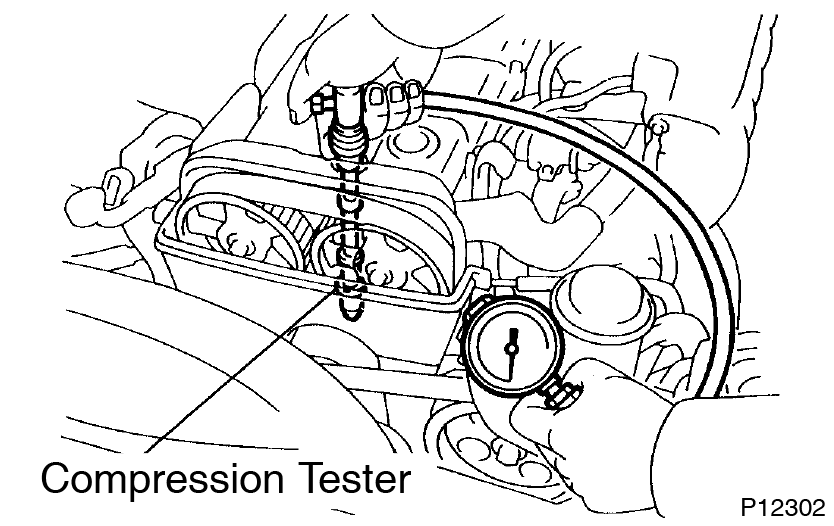Compression
If there is lack of power, excessive oil consumption or poor fuel economy, measure the compression pressure.
-
Warm up and stop engine
Allow the engine to warm up to normal operating temperature. - Disconnect distributor connector
- Disconnect high tension codes from spark plugs
- Remove spark plugs
-
Check cylinder compression

- Insert a compression tester into the spark plug hole.
-
While cranking the engine, measure the compression pressure.
Always use a fully charged battery to obtain engine revolutions of 250 rpm or more. -
Repeat steps (a) through (b) for each cylinder.
This measurement must be done in as short a time as possible.Compression:
1,275 kPa (13.0 kgf/cm 2 , 185 psi) or more
Minimum pressure:
1,079 kPa (11.0 kgf/cm 2 , 156 psi)
Difference between each cylinder:
98 kPa (1.0 kgf/cm 2 , 14 psi) or less -
If the cylinder compression in 1 or more cylinders is low, pour a small amount of engine oil into the cylinder through the spark plug hole and repeat steps (a) through (b) for the cylinder with low compression.
- If adding oil helps the compression, it is likely that the piston rings and/or cylinder bore are probably worn or damaged.
- If pressure stays low, a valve may be sticking or seating improper, or there may be leakage past the gasket.
- Reinstall spark plugs
- Reconnect high-tension coeds to spark plugs (See page IG-10 )
- Reconnect distributor connector
This guide is based on the book edition Toyota (RM502U, 1997)
Volksbibliothek, info@volksbibliothek.com
Back Next